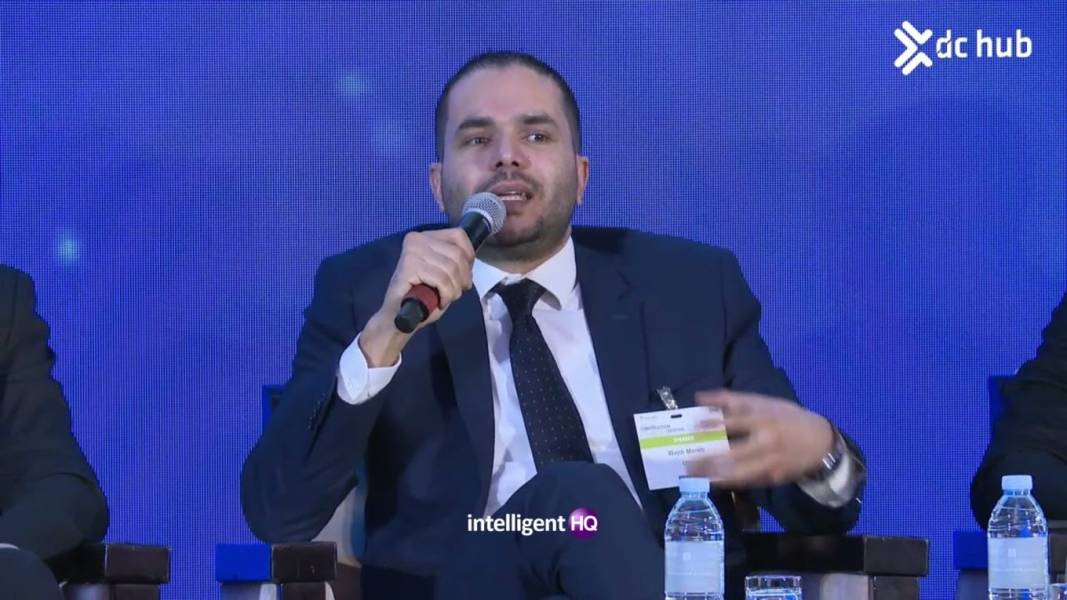Dinis Guarda interviews Wajdi Mereb, former Digital Transformation & BIM Manager at Roads and Transport Authority (RTA), Dubai. Wajdi Mereb is an engineer, architect and innovator who has more than 17 years of experience in digital transformation, assets management, and BIM (Building Information Modeling). The two discuss how the design and construction industry is undergoing a digital transformation with tools like digital twin technology and BIM. The podcast is powered by platforms like openbusinesscouncil, citiesabc, and fashionabc.
The construction and design industry is one of the oldest and most integral components of the modern world. From the very first stone structures of ancient civilisations to the expansive, towering skyscrapers of today, the industry has seen a considerable evolution over the centuries. With the rise of new technologies and innovative materials, the industry has experienced paradigm shifts that have revolutionised architecture and design.
The emergence of the computer age further revolutionised the construction and design industry. Computers have made it easier for architects and builders to create highly detailed renderings of their designs, allowing for the development of complex structures. Additionally, 3D printing made it possible to rapidly produce custom components. However, recent digital advancements have led to virtual reality and augmented reality-based solutions that enabled architects to virtually explore their designs and make changes in real time.
To discuss these advancements and to understand how emergent technologies are transforming the construction and design industry, Dinis Guarda interviewed Wajdi Mereb in the latest episode of his YouTube Podcast series.
Commenting on the evolution in the industry from conventional hand-drawn designs to computer-aided to the latest BIM and digital twin-enabled ones, Wajdi said:
“These are smart 3D models that can be helpful for us to share and generate information, and to support the design stage, construction stage, and operation stage. So, it is simply a 3D environment which can be visualised and understood easily by everyone.”
More interviews
Integration of Digital Twin technology with BIM for improved efficiencies and reduced costs
The integration of digital twin technology and Building Information Modelling (BIM) could revolutionise the construction industry by providing an unprecedented level of automation, cost savings, and efficiency. Integrating these two technologies allows a comprehensive digital representation of a building that can be monitored and updated in real-time.
Digital twin technology is a simulation of a physical object or system. It is a virtual representation of a physical object or system and can be used to monitor and analyse its performance. The digital twin is created by collecting data from the physical system and combining it with the digital version of the same object or system. This allows for a comprehensive, real-time representation of a building that can be monitored and updated.
Building Information Modeling (BIM) is a digital tool that enables the coordination, visualisation, and management of a construction project. It enables contractors to create 3D models of a building and its components, as well as access and analyse data about the construction process. BIM also allows for the integration of other disciplines such as structural engineering, architecture, and MEP.
“When we are talking about digital twin use cases and implementation, we are talking about the dynamic life information about the current status of the assets. BIM, on the other hand, shares with you the static data for what has been built at any point of time for the project life cycle”, Wajdi told Dinis.
The integration of digital twin technology and BIM allows for the creation of a highly accurate and detailed representation of a building. This enables developers, contractors, and other stakeholders to monitor a building in real time, detect any changes in its physical or environmental conditions, and analyse its performance. By having a comprehensive view of the building, contractors can make better decisions and carry out more efficient construction processes.
“Because there is an integration with the information to support the performance of the asset or the element at any point in time. So, the BIM can give you a base on which you can build by getting the information from IoT and equipment in order to learn more about the behaviour of the asset”, said Wajdi.
The integration of digital twin technology and BIM is also expected to reduce project costs. By providing a comprehensive representation of a building, the need for multiple visits to the site is reduced, resulting in less travel time and costs. Additionally, the data collected from the digital twin can be used to detect potential problems before they occur, allowing for proactive solutions which can reduce the cost of repairs.
Speaking about how digital tools are helping improve efficiencies while reducing maintenance costs, Wajdi told Dinis:
“The implementation of digital twins is showing great prospects, here in the Middle East, and in other parts of the world as well. The RoI has also been handsome. Some of the companies reported 5% saving in the total cost of the energy builds they have because they start monitoring and tracking their energy consumption based on the information they received while maintaining and analysing their digital twin of assets.”
Common data environments for better construction processes

Digital tools have made it easier for architects, engineers, and construction professionals to design, plan, and execute their projects with greater accuracy and efficiency. From pre-construction planning to on-site management, operation, and demolition, digital tools provide a comprehensive platform for the life cycle assessment and management of these structures.
Design and planning tools have become increasingly sophisticated, allowing architects to visualise their designs in 3D and create detailed plans for their projects. These tools are often used in conjunction with Building Information Modeling (BIM) systems, which provide a comprehensive overview of the project and its components. Additionally, 3D printing has enabled the rapid prototyping of structures, allowing builders to quickly and accurately assess the feasibility of their projects.
Wajdi explained to Dinis the mechanisms of successfully creating a multi-disciplinary project. Each designer from different disciplines submits their designs in ‘Common Data Environments’, which are, apparently, online platforms that allow multiple stakeholders to store, access, and collaborate on project data and documents. They serve as a central hub for project information, allowing users to securely store and manage data in a single source of truth. CDEs provide a secure, centralised platform which enables greater collaboration between stakeholders, allowing for increased productivity and efficiency.
“Common Data Environments, where multi-disciplinary data about a project can be stored. Each and every member of the supply chain and the other stakeholders of the project having privileged access to the piece of information gets into a common pool”, he said.
Additionally, CDEs allow for easier tracking and management of tasks, documents, and data, enabling users to gain greater visibility into the project. Highlighting the benefits of CDEs, Wajdi told Dinis:
“CDEs tackle the most important challenge that the construction and design industry is facing today: siloed teams, and offer better and efficient systems that are cost-effective and save time.”
About citiesabc.com
https://www.citiesabc.com/
https://twitter.com/citiesabc__
About openbusinesscouncil.org
https://www.openbusinesscouncil.org/
4IR: AI Blockchain Fintech IoT Reinventing a Nation by Dinis Guarda and Rais Hussin (4irbook.com)
Dinis Guarda citiesabc openbusinesscouncil Series is also available as podcast on:
Apple Podcasts: https://podcasts.apple.com/us/podcast/dinis-guarda-citiesabc-openbusinesscouncil-series/id1510330391
On Spotify: https://open.spotify.com/show/1vA8KaDaRpJ0mAfpNbfTSF?si=H_WngL4RSOyu1W7VAmM41w&dl_branch=1
Google Podcasts: https://podcasts.google.com/feed/aHR0cHM6Ly9mZWVkcy5idXp6c3Byb3V0LmNvbS8xMDMyMzg4LnJzcw==
Amazon Music: https://music.amazon.com/podcasts/953a5156-823c-4e86-baeb-4fda1128e44c/DINIS-GUARDA-CITIESABC-OPENBUSINESSCOUNCIL-SERIES

Hernaldo Turrillo is a writer and author specialised in innovation, AI, DLT, SMEs, trading, investing and new trends in technology and business. He has been working for ztudium group since 2017. He is the editor of openbusinesscouncil.org, tradersdna.com, hedgethink.com, and writes regularly for intelligenthq.com, socialmediacouncil.eu. Hernaldo was born in Spain and finally settled in London, United Kingdom, after a few years of personal growth. Hernaldo finished his Journalism bachelor degree in the University of Seville, Spain, and began working as reporter in the newspaper, Europa Sur, writing about Politics and Society. He also worked as community manager and marketing advisor in Los Barrios, Spain. Innovation, technology, politics and economy are his main interests, with special focus on new trends and ethical projects. He enjoys finding himself getting lost in words, explaining what he understands from the world and helping others. Besides a journalist, he is also a thinker and proactive in digital transformation strategies. Knowledge and ideas have no limits.




























